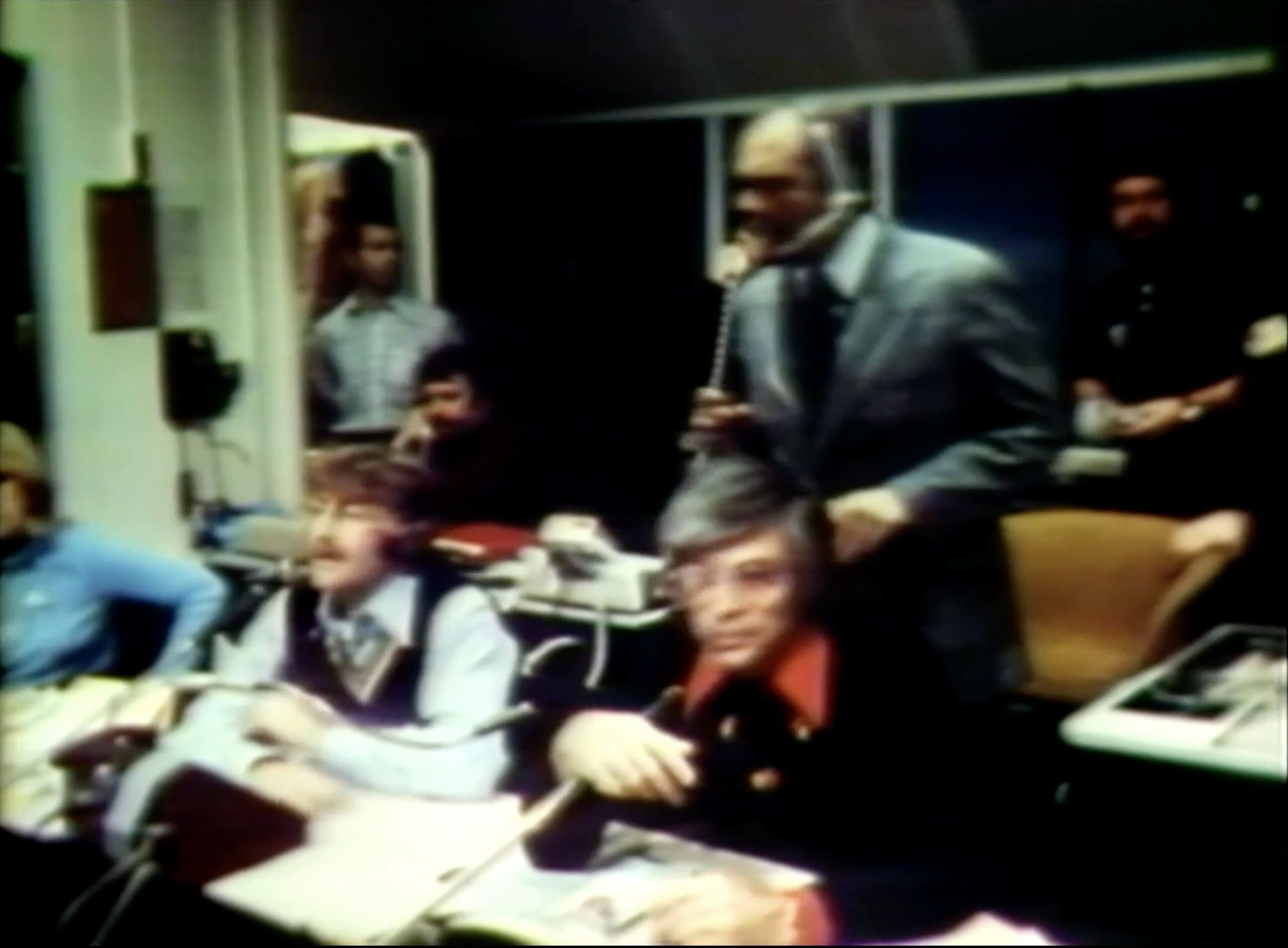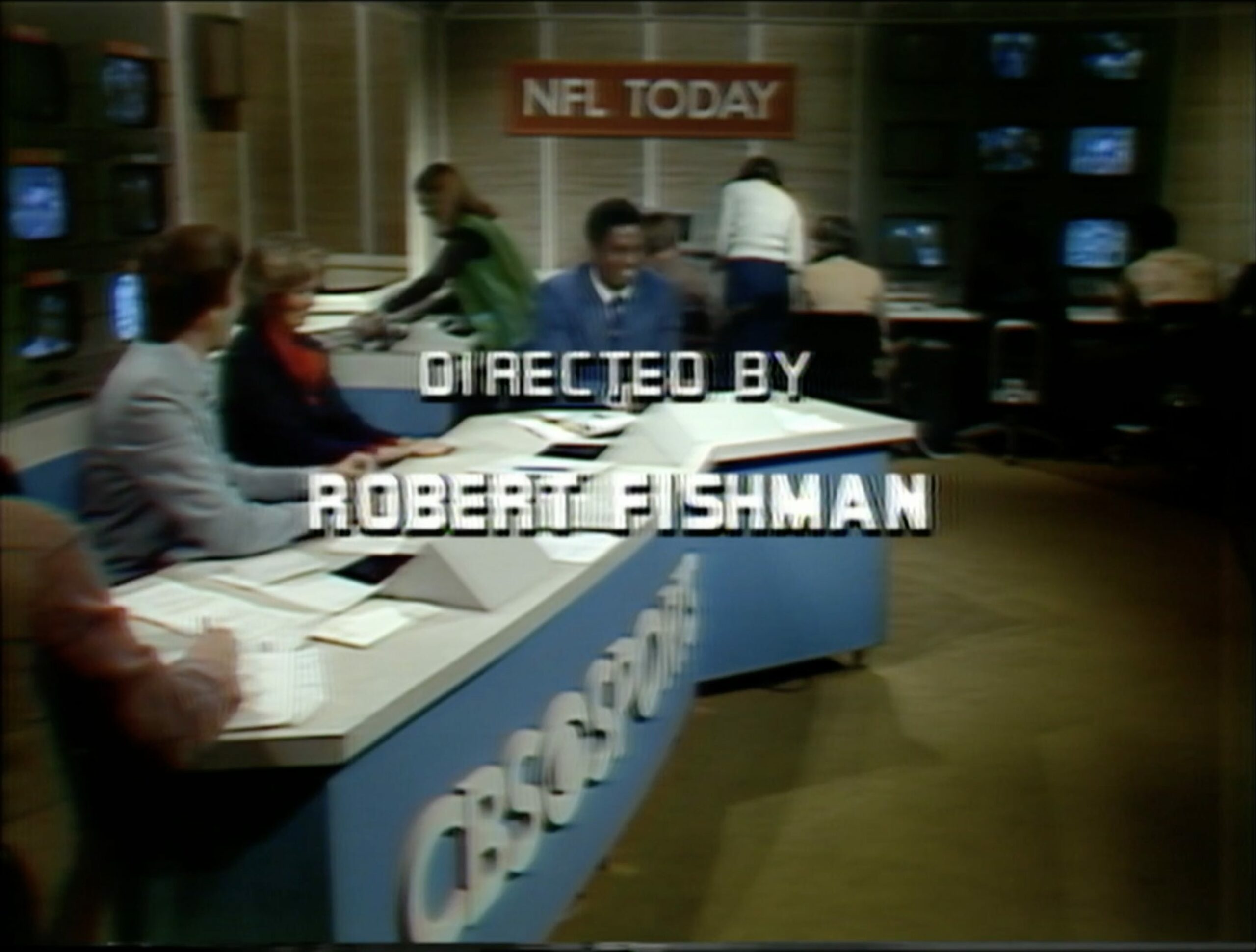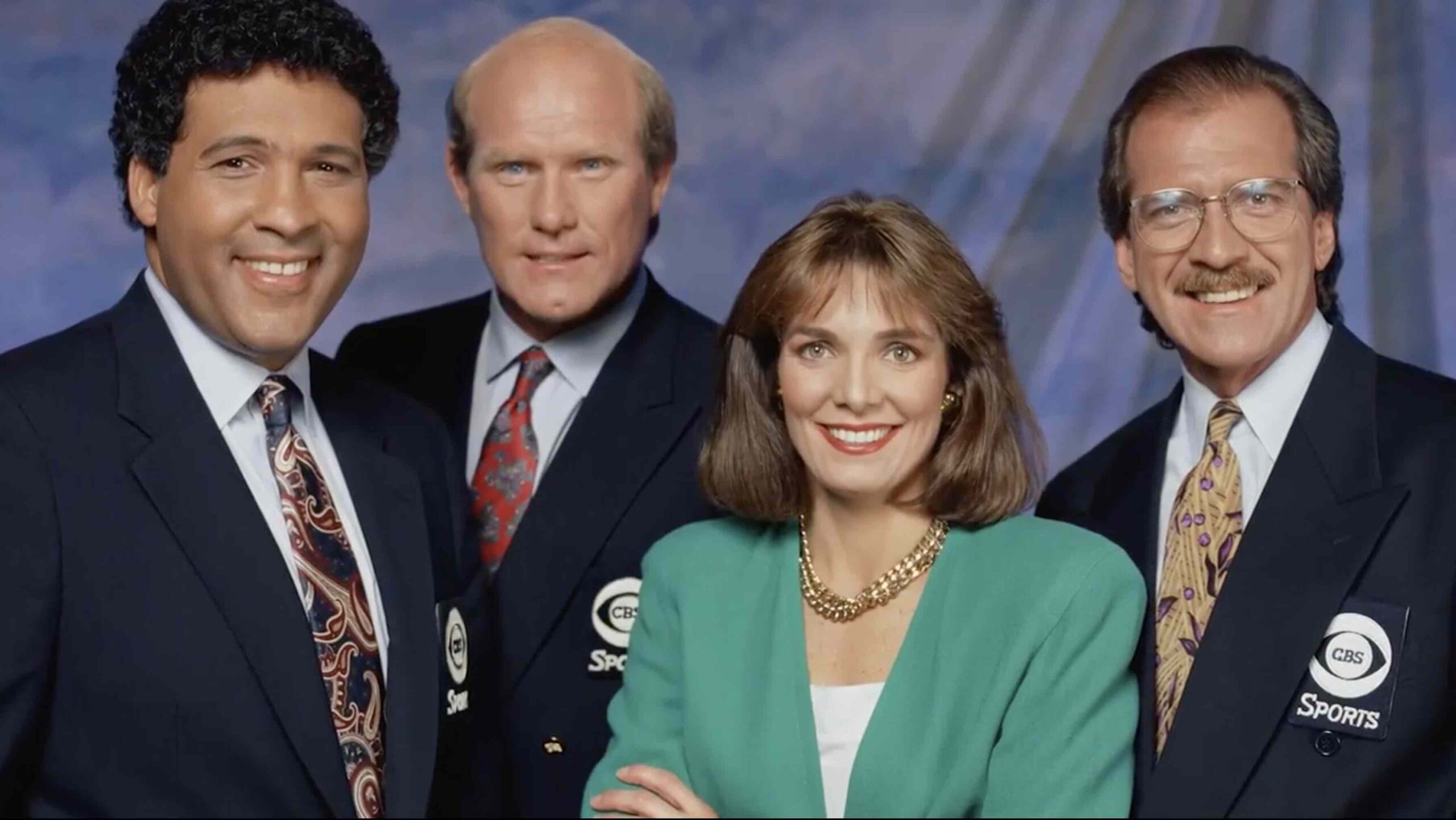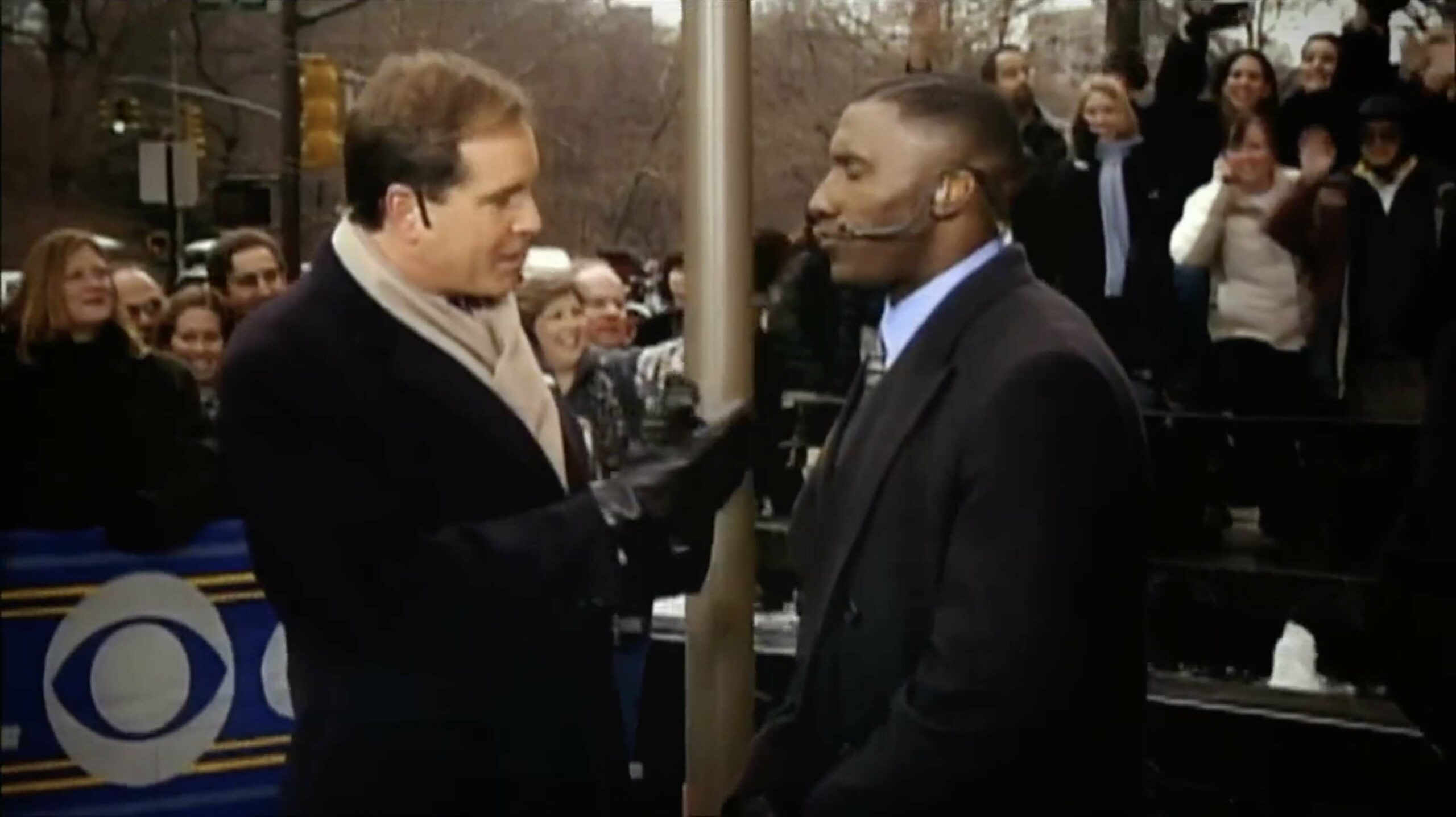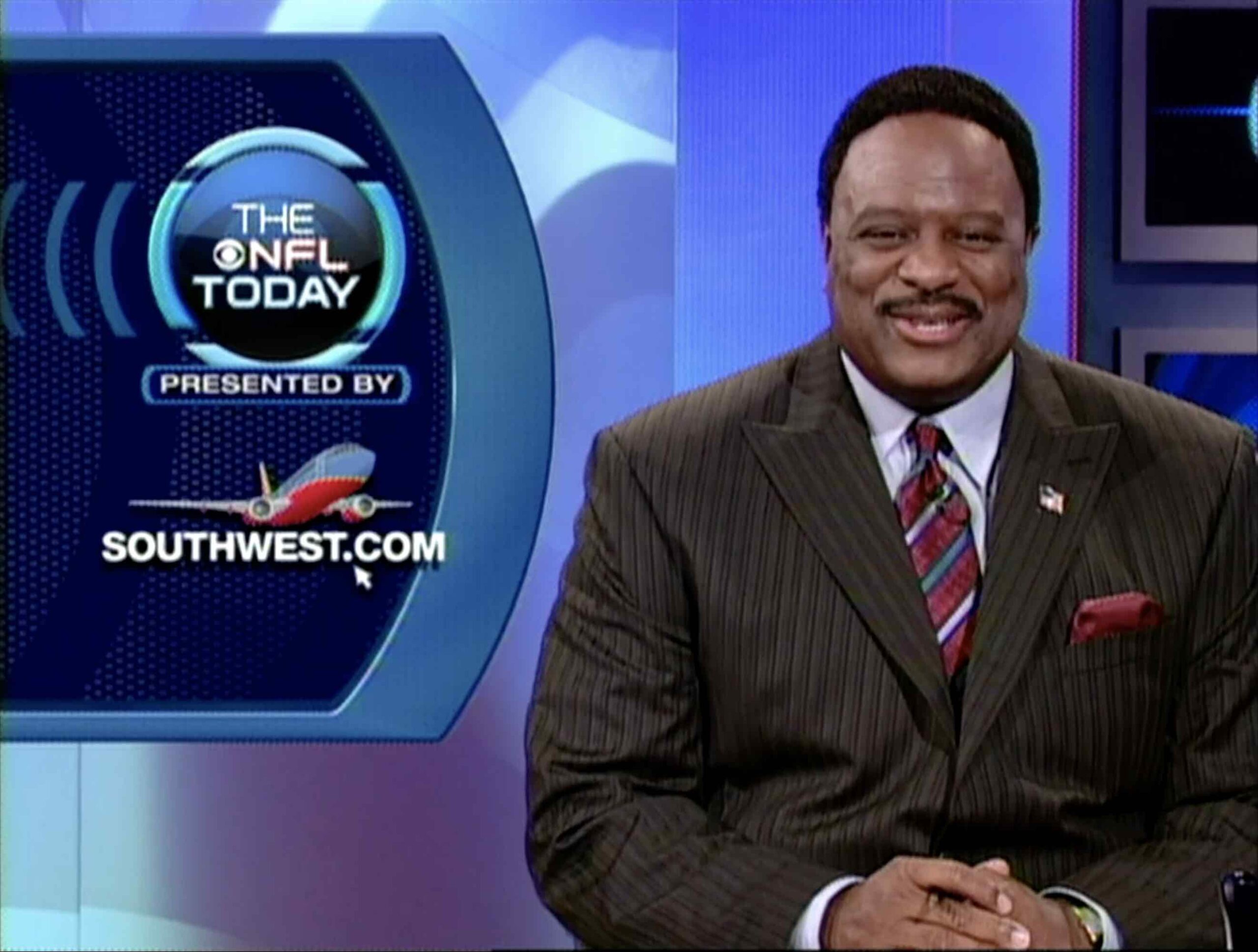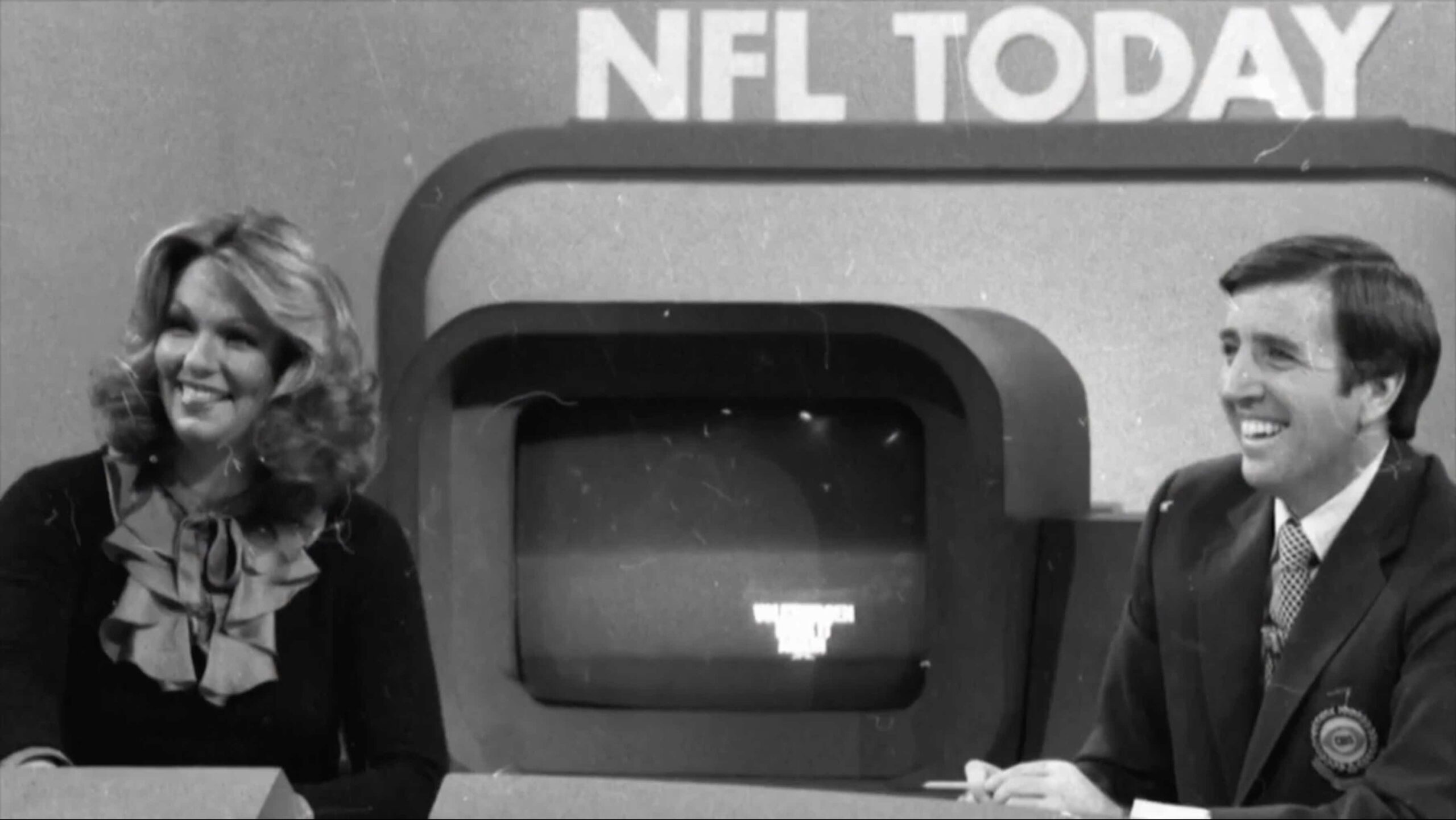The NFL Today: How the CBS Sports Juggernaut Overcame Technical Glitches To Redefine Live Studio Programming
One-hour special on Super Bowl Sunday highlights the show’s origins, industry impact
Story Highlights
Nearly 50 years ago, CBS Sports’ The NFL Today began in earnest on Sept. 21, 1975. The show’s first crew included host and Sports Broadcasting Hall of Famer Brent Musburger, analyst Irv Cross, and reporter and Sports Broadcasting Hall of Famer Phyllis George. Since then, the program has witnessed the meteoric rise of some of CBS Sports’, and the industry’s, greatest talent, the inclusion of women and people of color on camera when that wasn’t the norm, and a dramatic shift in how a live studio show is conducted.
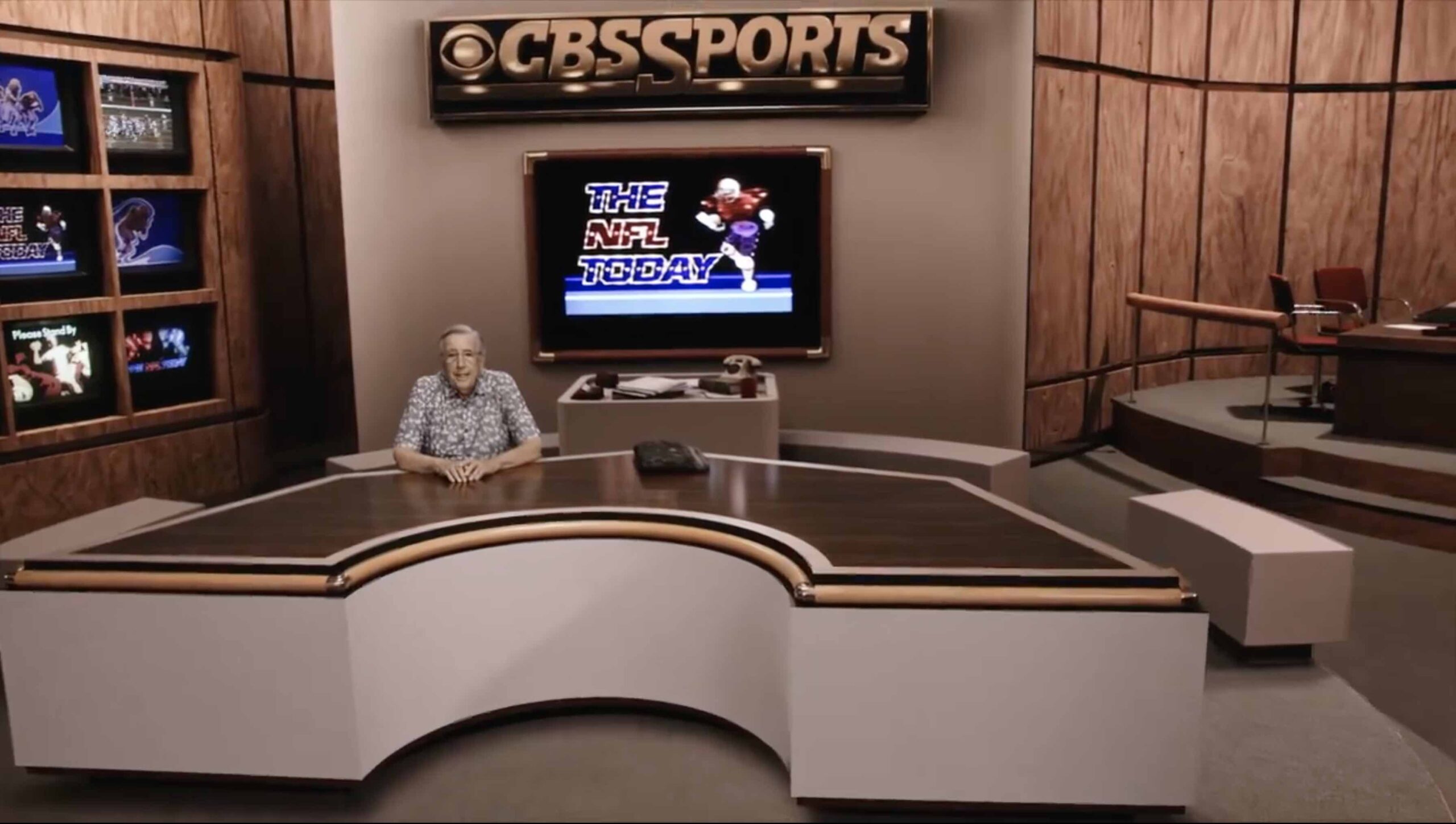
Brent Musburger at The NFL Today’s original desk. A one-hour special on CBS prior to Super Bowl LVIII uses mixed-reality technology to re-create it.
On Sunday, Feb. 11 — prior to CBS Sports’ presentation of Super Bowl LVIII — the network will air a one-hour special titled YOU ARE LOOKING LIVE! The Show That Changed Sports Television Forever. The special will touch on the strides that The NFL Today has made to diversify and revolutionize the cadence, elements, and look of live studio programming, but the program also set other standards, such as incorporating real-time views of stadiums from around the country. When it came to the learning curve and overcoming possible technical glitches during the early days of live television, Musburger was the right person for the job.
“To tell you the truth, technology was not as good as it is today,” he says. “We worked with 2-in. videotape and didn’t have computers, so we had to wing it.”
The show’s concept was developed by Robert Wussler, who at 40 years old was CBS Sports’ youngest president. Looking to make a major move in the sports-broadcasting industry, he aimed to be one of the first networks to produce a 100%-live pre/postgame and halftime show. At the time, integrating live shots of NFL stadiums — or any sports venue, for that matter — was completely unheard of. Either too risky or too expensive to pull off, it was an endeavor that no other broadcaster even attempted. Wussler had his point guard in Musburger, and he rounded out his lineup with Cross, whom Musburger knew from Cross’s days playing football at Northwestern University, and George, who had won the title of Miss America four years earlier.
“As a writer,” says Musburger, “I had absolutely no intention of going into broadcasting, but there was an opening, and [CBS Sports] asked me to audition, and I got the job. I couldn’t have asked for better teammates than Irv and Phyllis. I was blessed to be around an outstanding group of people that made the show work.”
After filling out the desk, Wussler looked for behind-the-scenes folks eager for the challenge. At age 27, Sports Broadcasting Hall of Famer Bob Fishman was chosen for the director’s chair alongside Sports Broadcasting Hall of Famer Mike Pearl as producer. The former, a sports-video–production legend, helped establish the live shots that would open every show.
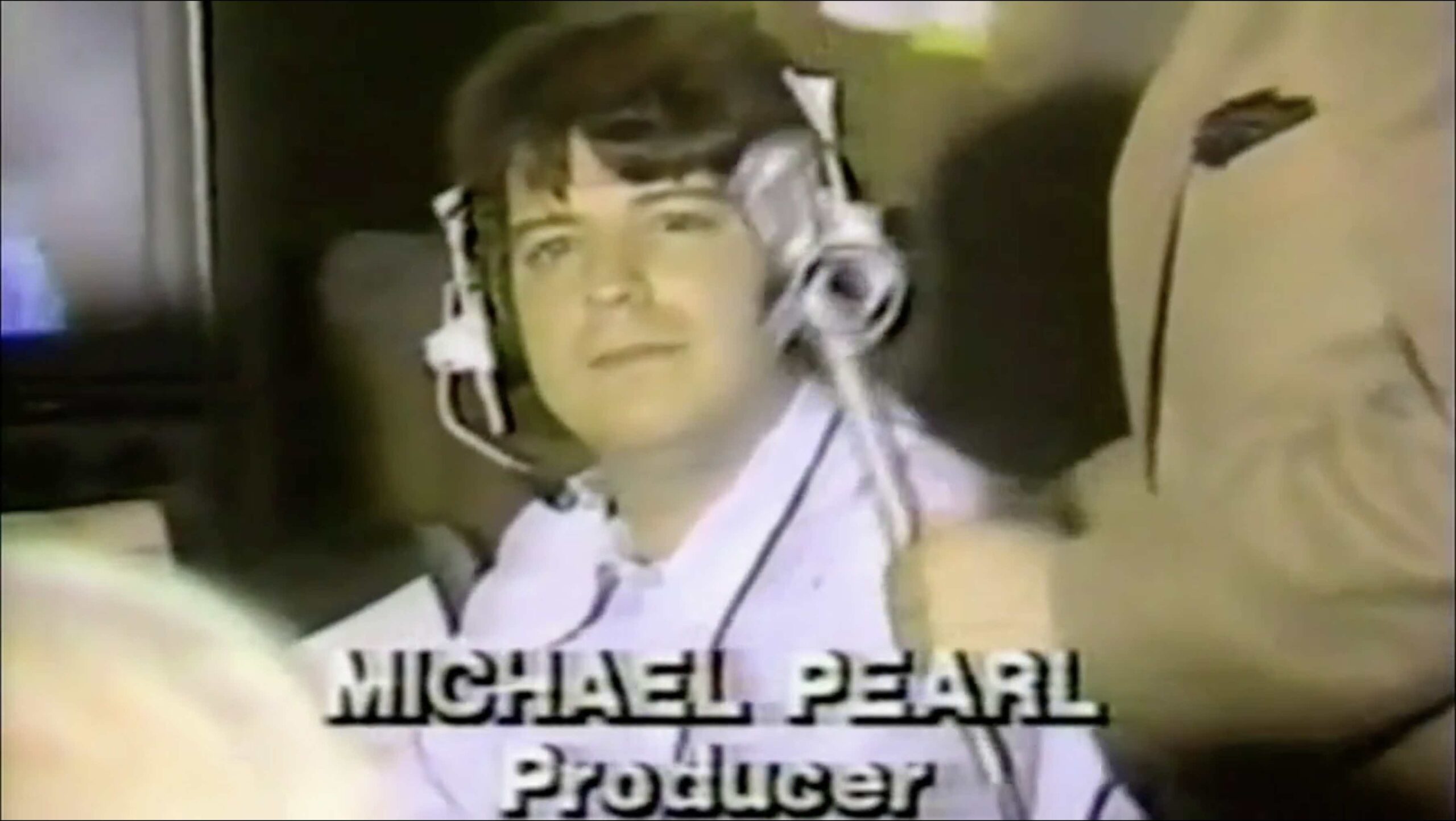
Mike Pearl served as NFL Today producer at the start of his Sports Broadcasting Hall of Fame career.
“[The idea] actually came from the friend of Bob [Fishman’s] father, who liked to bet on totals and over/unders,” says Musburger. “He wanted to see the weather, so I asked Bob if we could start going live to each of the stadiums. There was a game in November at Soldier Field, and it was just not a good day.”
More on the show’s impact on the sports-betting landscape a bit later. Over the next decade and a half, Musburger, Cross, and George led a show that became one of the most popular ways for NFL fans to start their Sunday. After Musburger departed in 1989, the 1990s were kicked off with Greg Gumbel as the new host, alongside Sports Broadcasting Hall of Famers Terry Bradshaw and Lesley Visser. Gumbel picked up where his old friend from Chicago had left off.
“Brent was from the CBS affiliate, WBBM-TV, and I worked at the NBC affiliate, WMAQ-TV,” Gumbel recalls. “We would run into each other on occasion, and I never dreamed that, down the road, I would be sitting in the chair that he made so famous.”
Although Gumbel would return for a second, 2004-05 stint as host, his initial run was cut short when CBS Sports lost NFL rights in 1993. Five years later, the broadcaster under the leadership of Sports Broadcasting Hall of Famer Sean McManus negotiated a new deal with the league, and The NFL Today was back. When the NFL returned to CBS Sports in 1998, someone else was in the NFL Today host chair: Sports Broadcasting Hall of Famer Jim Nantz.
“On that first day that we returned,” says Nantz, “it was a magical feeling, being on the air with The NFL Today.”
Before becoming a marquee name as play-by-play announcer for the NFL on CBS, the Masters, the NCAA Men’s Final Four, and more, the University of Houston graduate had cut his teeth on the live-studio side, moving from college football and college basketball to on-course reporting for golf. Becoming the new face of the show, he recalled his experience when he first auditioned for a role at CBS Sports on Aug. 17, 1985.
“When I stepped onto [The NFL Today] set,” Nantz says, “I saw a piece of masking tape on the back of a chair with the name ‘Brent’ written in Sharpie. To this day, I can’t believe I got to sit in that chair.”
When Gumbel left in 2005, the broadcaster tapped Sports Broadcasting Hall of Famer James Brown for the lead role. After stints at CBS Sports (1984-93) and Fox Sports (1994-2005), Brown returned to CBS Sports in 2005, assuming his current hosting duties the next year. Like all roads to The NFL Today, Brown’s journey to the program was changed by an encounter with Musburger.
“One of my first assignments with Brent was as a sideline reporter during an NCAA Men’s Basketball Tournament game,” says Brown. “I knew he was always about understanding the storylines, so I took copious notes and had my 45 seconds of reporting memorized. About two minutes before airtime, he says, ‘JB, I have a different report for you.’ I said, ‘You must be kidding me.’ It taught me a lesson: to always be observant, not be overly robotic, and be engaged in the moment.”
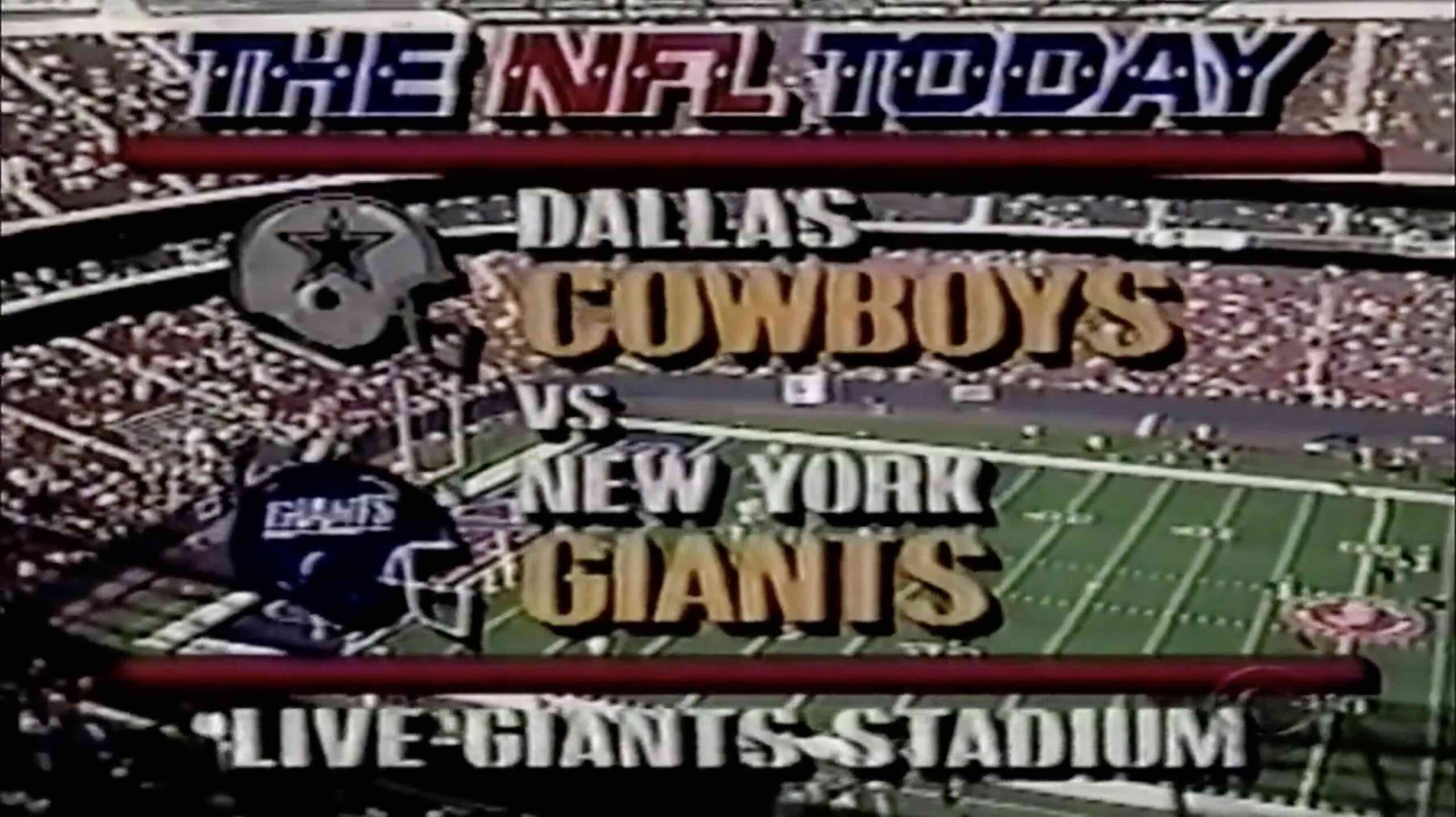
The NFL Today pioneered in integrating live shots from all NFL stadiums, including this one from Giants Stadium in East Rutherford, NJ.
As in Musburger’s early days, technical glitches still pop up from time to time. For example, Super Bowl XLVII in 2013 experienced a 34-minute blackout at then-Mercedes Benz Superdome in New Orleans. Brown’s predecessor, Nantz, was forced to toss the broadcast to Brown and The NFL Today crew to fill time. Relying on his skill at spontaneity, Brown and company navigated the stoppage with grace.
“I want to be well-prepared and set the stage for what the viewers are seeing,” says Brown. “[In that moment], I tried to keep my finger on the pulse of what was going on.”
Outside of ushering in a new era of live production, the show became the benchmark for on-screen racial and gender equality. With the first Black and female talent of a studio show in, respectively, Cross and George, The NFL Today was a watershed for people previously unable to break into the industry.
Cross’s involvement allowed folks like Gumbel, Brown, and current analyst Nate Burleson a seat at the table. Some would also say that Cross legitimized the role of former athletes as analysts, paving the way for personalities like Sports Broadcasting Hall of Famer Charles Barkley on Inside the NBA.
George’s participation led the way for Visser, Jayne Kennedy, and Bonnie Bernstein to join the same program. That influence extended to other on-camera positions as well: such as Sports Broadcasting Hall of Famers Andrea Joyce on various sports at CBS Sports and NBC Sports’ coverage of the Olympics, Robin Roberts on ESPN’s SportsCenter for a magical 15-year run, and Mary Carillo on commentary for numerous tennis competitions and the Olympics.
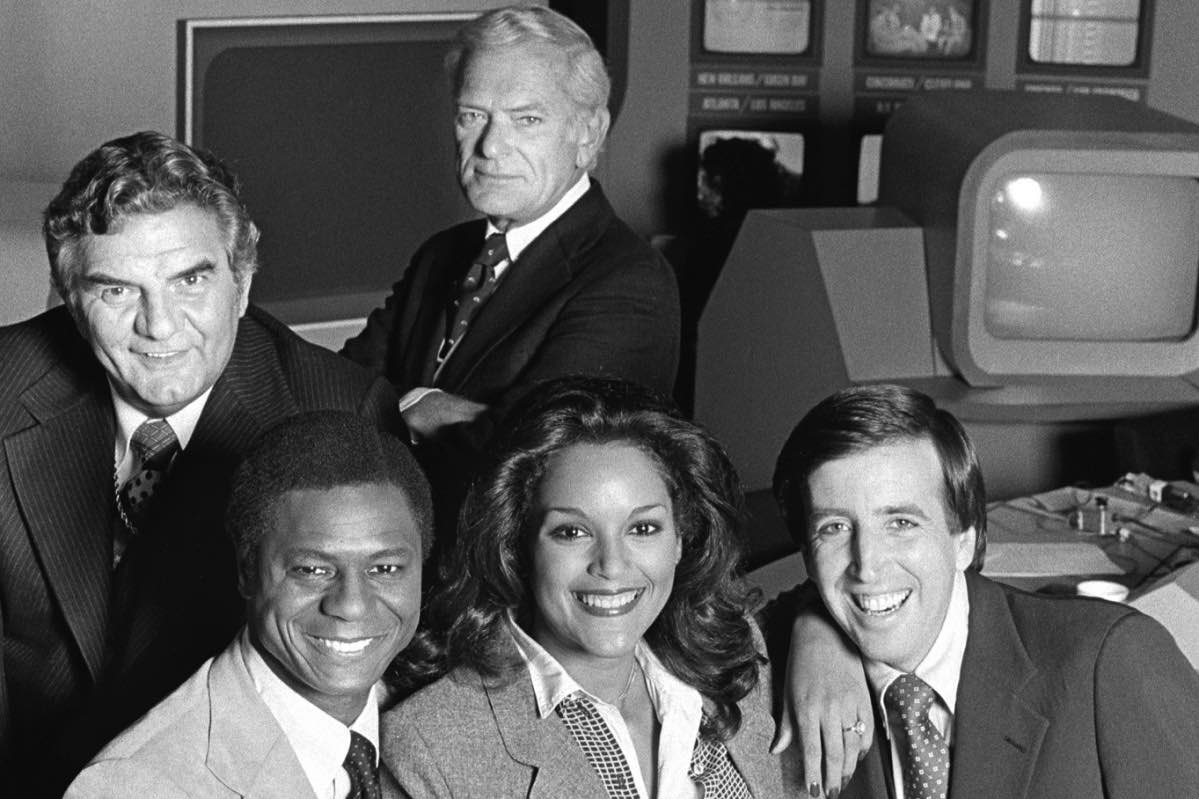
On-air team in the ’70s: (back row) Jimmy “The Greek” Snyder and original host Jack Whitaker; (front row) Irv Cross, Jayne Kennedy, and Brent Musburger
Besides furthering representation, The NFL Today was a studio show before its time in implementing a sports-betting aspect. Prior to the widespread legalization of sports betting in the 21st century, the predecessor of today’s sports-betting analyst took the industry by storm in 1976-88: Jimmy “The Greek” Snyder, a Las Vegas-bookmaker-turned-media-personality, thrived on predicting scores and outcomes of the NFL slate. Today, broadcasters are launching their own sports-betting verticals, alternative broadcasts are developed around legalized sports betting, leagues are partnering with sports-betting entities like DraftKings and FanDuel, and stadiums and venues are integrating a sportsbook or sports-betting element into their existing footprints. And it was all started by The NFL Today.
Not being one to shy away from a good opportunity, Wussler had persuaded Musburger to bring Snyder into the fold and convinced then-NFL Commissioner and Sports Broadcasting Hall of Famer Pete Rozelle that this new angle was good for the league and its viewership.
“I knew that [Rozelle] wasn’t completely naive [about sports betting] and that there were prominent bookmakers involved in the National Football League,” says Musburger. “After Bob [Wussler], Jimmy, and I met with the commissioner, Rozelle asked that we not use actual spreads. Not knowing how to discuss sports betting without spreads, Bob came up with the idea of Jimmy’s discussing strengths and weaknesses. Bob [Fishman] came up with the board that we used: if Jimmy had all the checks on one side of the board, you knew he was going for the cover on that particular game.”
It’s quite fitting that Super Bowl LVIII from Las Vegas will be produced by a catalyst for discussing legalized sports betting in studio programming. Ultimately, the show’s lasting mark on the sports broadcasting is its boldness in trying new things and being the first to do so. All its achievements will be covered in the one-hour special prior to kickoff, but the show’s past, present, and future derive from the man with the famous phrase.
“I think its legacy goes back to Brent,” says Nantz, “with his energy, enthusiasm, and the way he directed his way through the show. There could be only one ‘first,’ but this ‘first’ was done so exceptionally well.”
“YOU ARE LOOKING LIVE! The Show That Changed Sports Television Forever will air on Sunday, Feb. 11 at 1 p.m. ET on CBS and Paramount+. The program will lead into a four-hour edition of The NFL Today ahead of Super Bowl LVIII.
